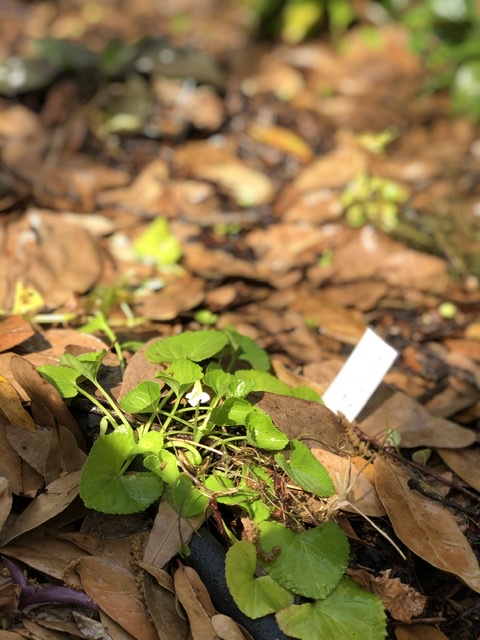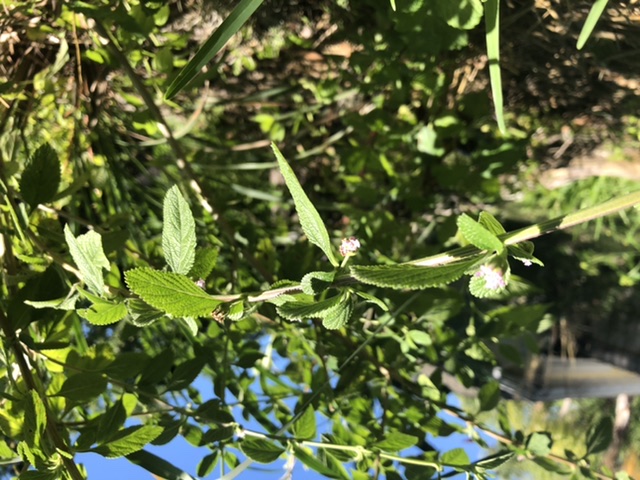Ablemoschus manihot Chief Kubo's Prize South Sea Salad Tree
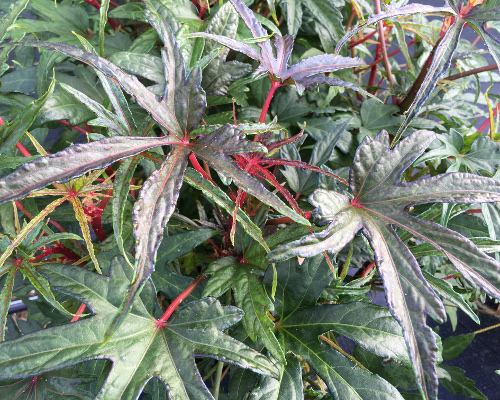
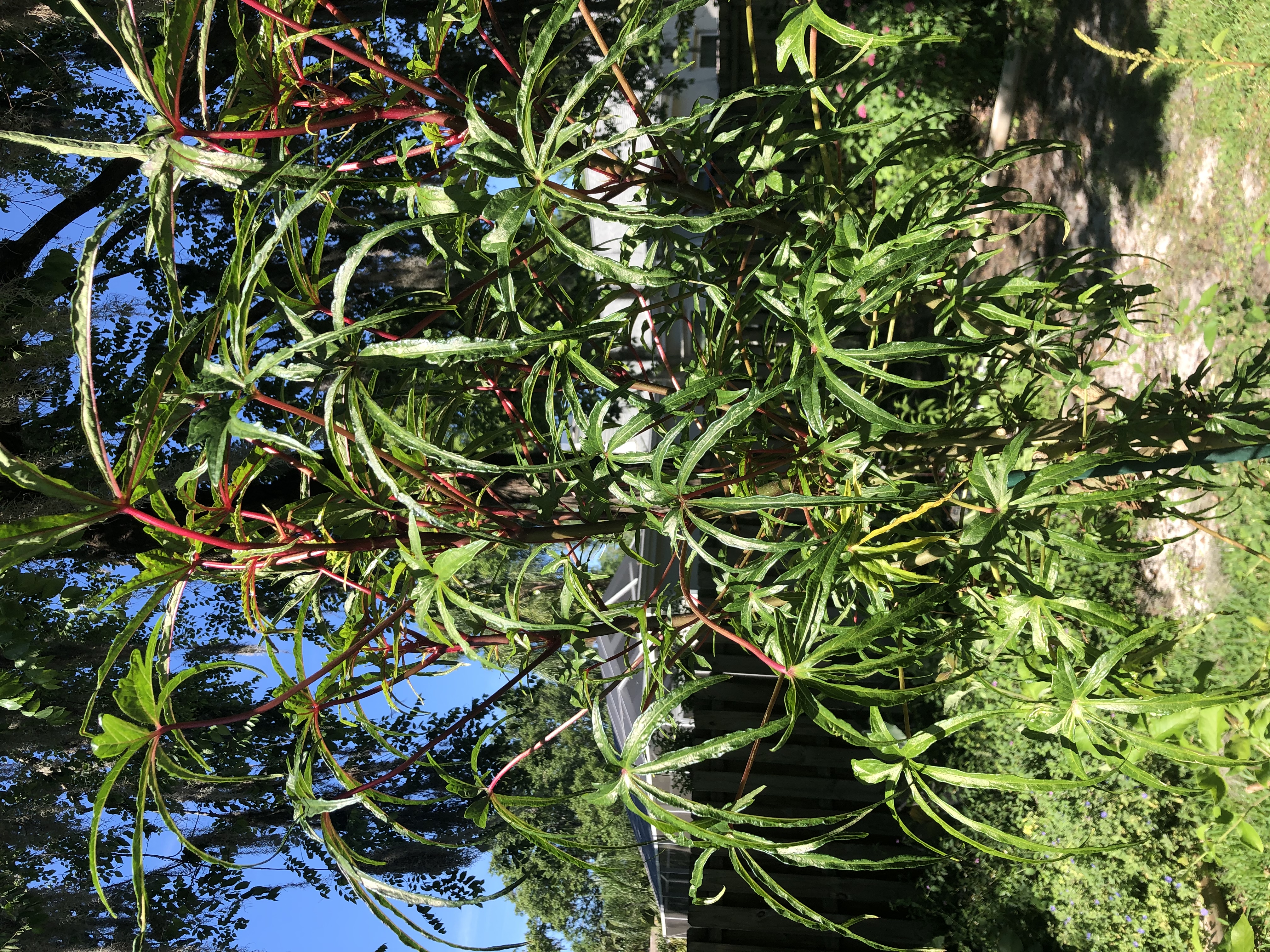
Highlights
- Yellow blooms
- Interesting leaf shape
- Red petioles
Ablemoschus manihot Kiko's Crump South Sea Salad Tree
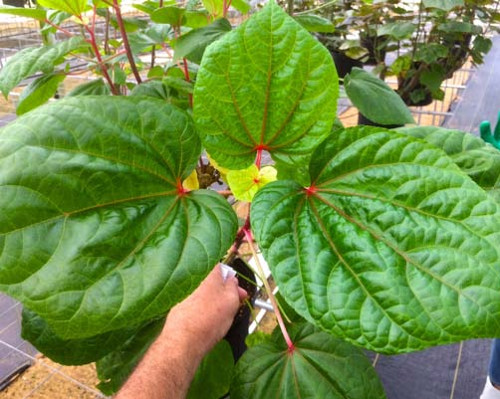

Highlights
- Large leaf
- Prominent sunken venation
- Red steams & yellow blooms
Abelmoschus manihot 'Auntie Lilli's South Sea Salad tree
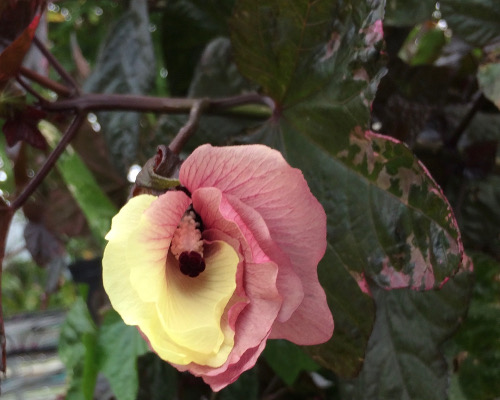
Highlights
- Tri-colored variegation
- High antioxident content
- Can have multiple colored blooms
Gynura crepioides 'Okinawa Spinach'
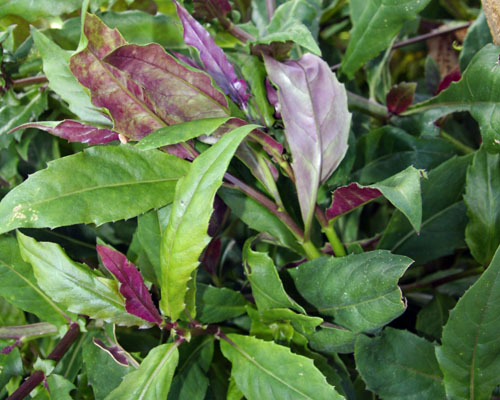
Highlights
- Adds aesthetic element to cuisine
- Many claims that it can lower cholesterol
- Leaves & shoots are edible
- Eat raw or cooked
- Edible ground cover
Gynura procumbens 'Longevity Spinach'
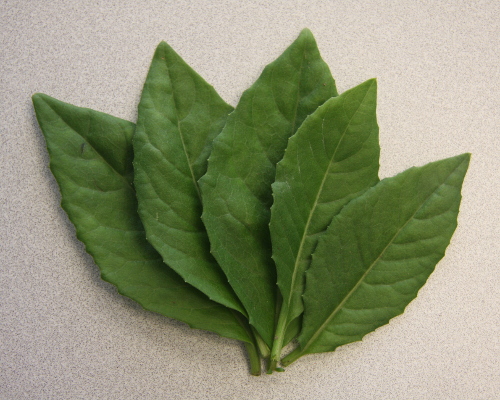
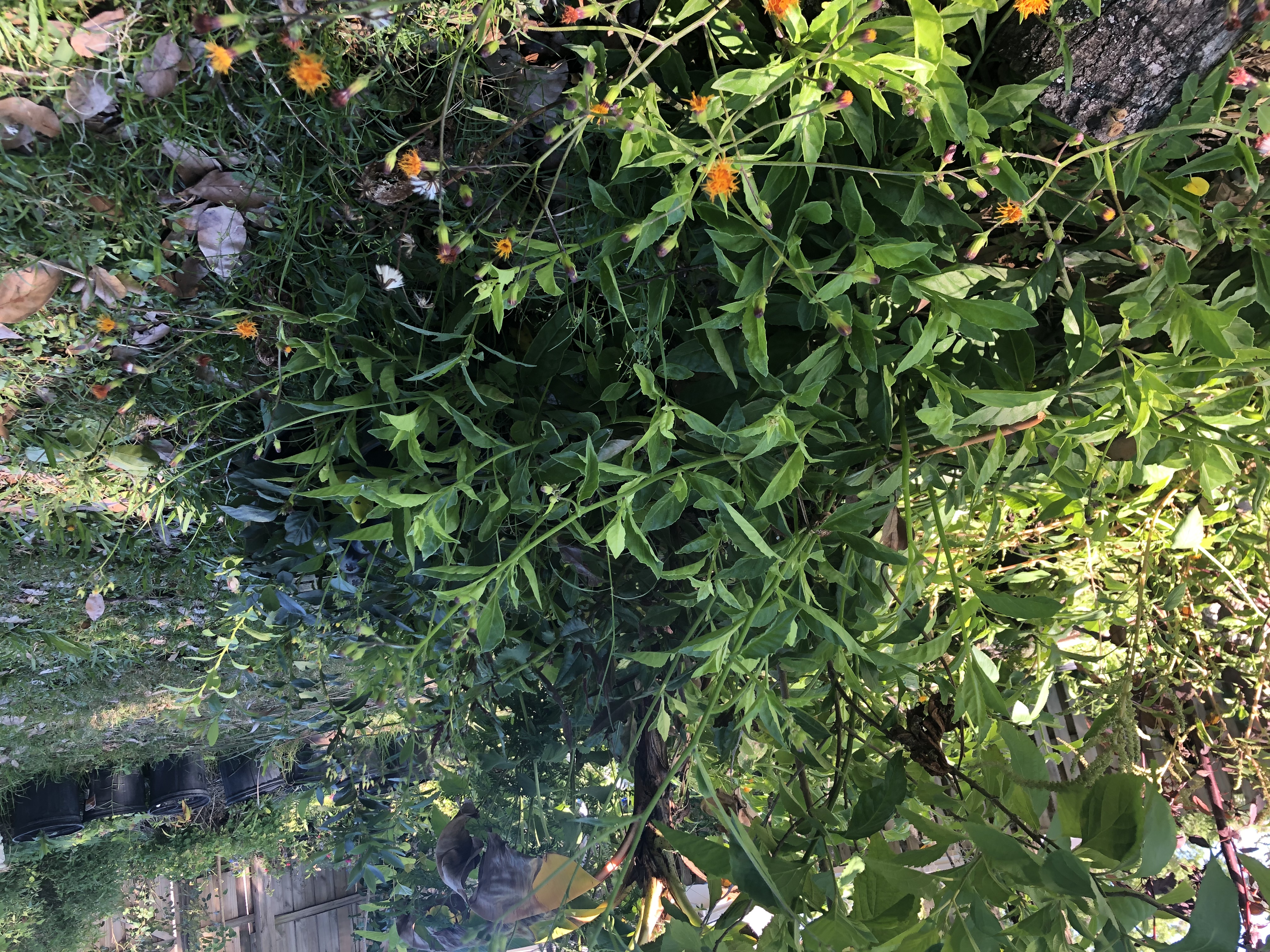
Highlights
- Adds aesthetic element to cuisine
- Wonderful ground cover for warm areas
- Leaves & shoots are edible
- Eat juiced, raw, or cooked
- Cultivated in Southern Asia
hibiscus cannabinus
edible leaves
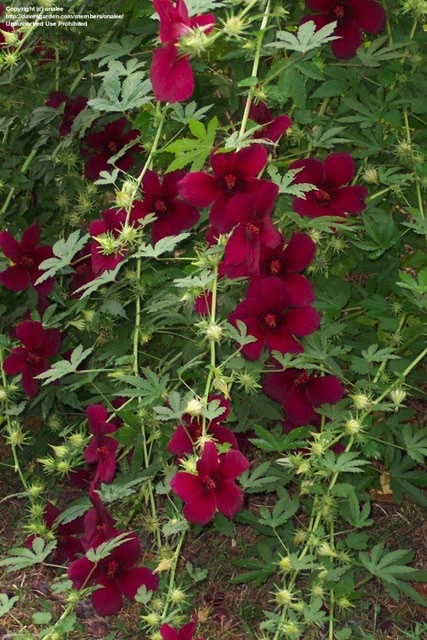
Transplant to partial shade to sun when strong roots are developed
Edible Uses
Shoots and young leaves – cooked
Used as a potherb or added to soups[
The leaves have an acid flavour like sorrel Seed – roasted or ground into a flour and made into a kind of cake Root – it is edible but very fibrous
Mucilaginous, without very much flavour Bark – raw
Children chew the bark for its sweetness
An edible oil is obtained from the seed The seed contains about 20% of a first class cooking oil The yield varies from 2 – 10 tonnes per hectareMedicinal
The juice of the flowers, mixed with sugar and black pepper, is used in the treatment of biliousness with acidity
The seeds are aphrodisiac and stomachicThey are added to the diet in order to promote weight increase
Applied externally, the leaves are used as a poultice on pains and bruises The leaves are purgative An infusion of the leaves is used in the treatment of coughs In Ayurvedic medicine, the leaves are used in the treatment of dysentery and bilious, blood and throat disorders.The powdered leaves are applied to Guinea worms in Africa
The peelings from the stems have been used in the treatment of anaemia, fatigue, lassitude, etc
Pigeon Pea
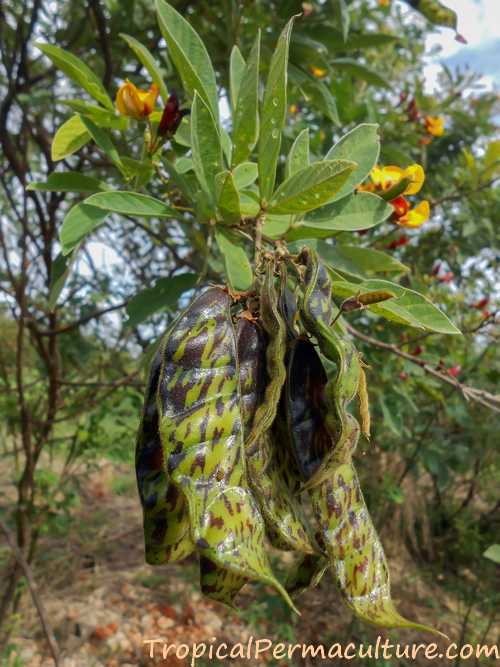
It's a staple food crop that provides good protein. You can use the green peas like fresh peas, and the dried peas like any other dried peas, beans or lentils. (In India they are actually one of the most popular pulses. Dhal is made from pigeon peas.) The peas can also be sprouted to make them even more nutritious, and they can be ground into flour.
- Leaves, flowers, seed pods and seed all make nutritious animal fodder. My chickens love the peas.
- The flowers attract bees.
- Pigeon peas can be frequently pruned for mulch.
- Every time you prune them (and also when the plant dies) the root nodules release nitrogen that can be used by other plants.
- Their open canopy shelters young, delicate plants but lets enough light through for things to grow underneath.
- A hedge makes a good windbreak.
read more at tropicalpermaculture.com
African Blue Basil
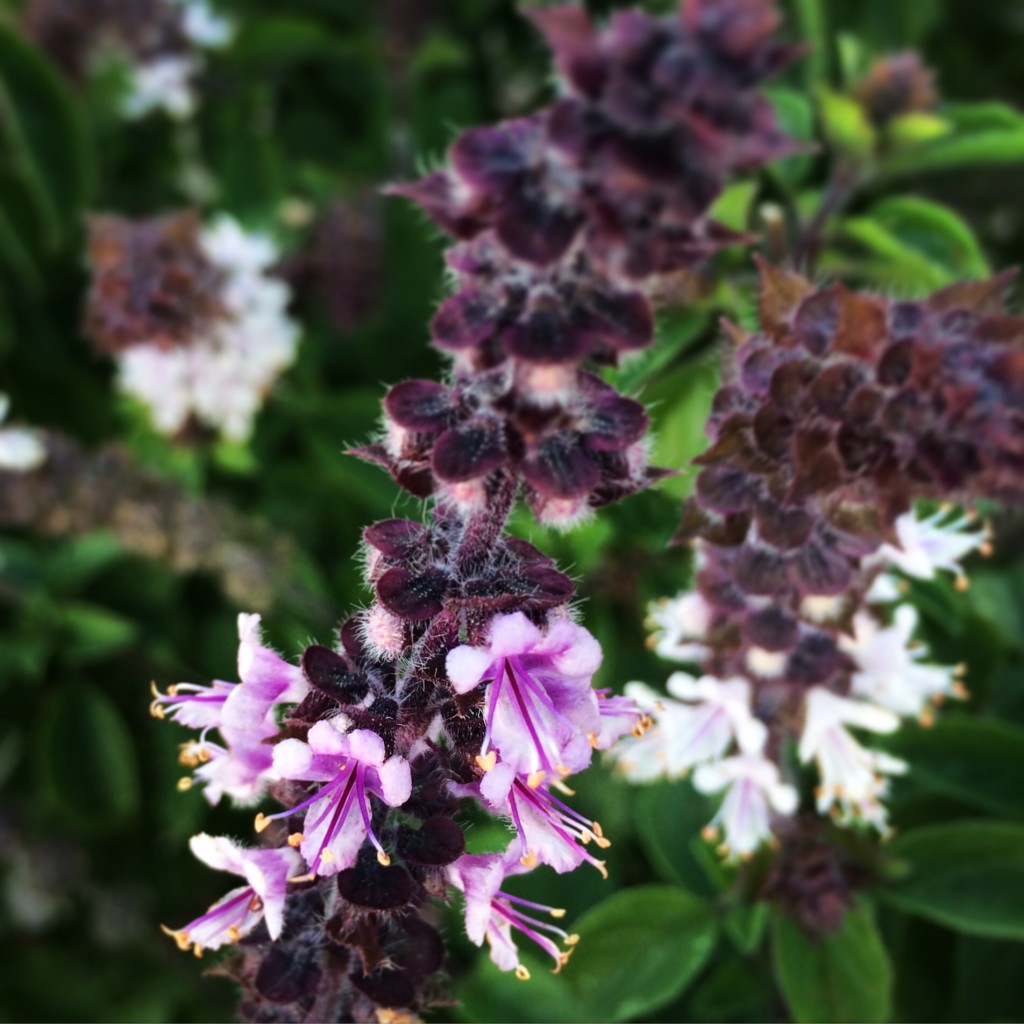

“One of my favorite staple bee flowers though is African blue basil, a plant that hums with bees from sunup to sundown every day in my garden. It’s a beautiful plant, with green-purple foliage; a plump, round growing habit; a bewitching herbal smell; and an eye-catching spray of purple and white flower spikes. For a basil, it’s a surprisingly forgiving plant: if you forget to water or prune an established African blue basil, it bounces back. It also makes great cut flowers!"
"As a bee plant, African blue basil tops my list because it’s so easy to propagate from cuttings. For new gardeners out there, propagation from cuttings is a cloning a technique, a way to grow lots of new plants from an existing plant, that works especially well for anything in the mint family—like basil."
Tutorial: How to Propagate African Blue Basil
Lemongrass
great for tea, combating the flu
Lemon balm
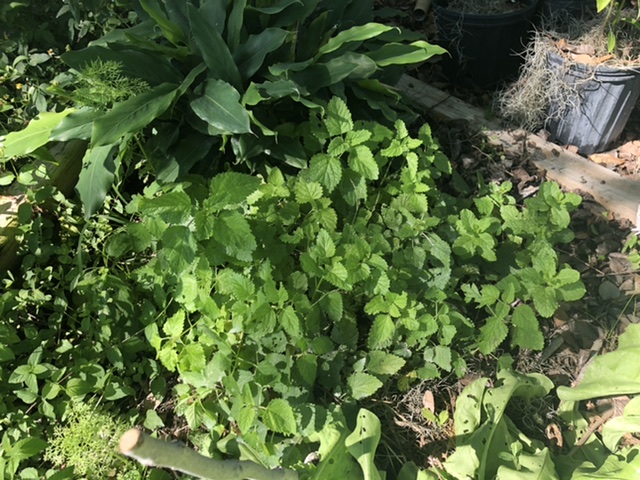
Mint
could be spearmint, cinnamon, chocolate, or orange ?
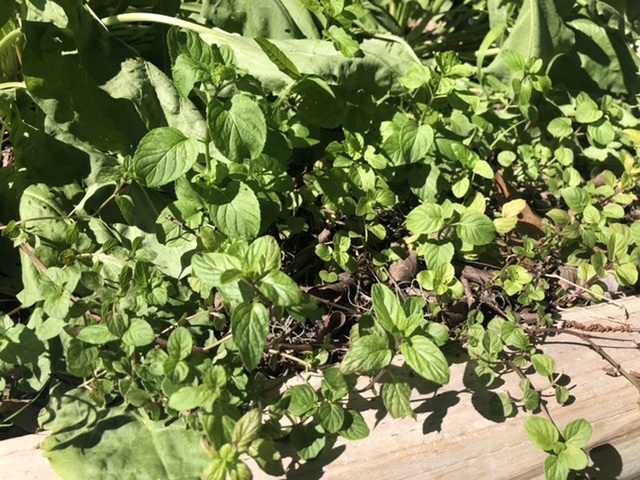
Sisso spinach
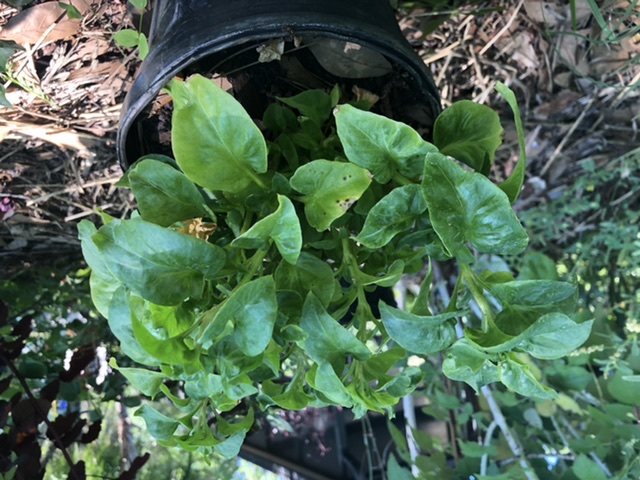
Sissoo spinach, also known as Brazilian spinach, is a tropical edible groundcover of the genus Alternanthera and used as a leaf vegetable. Sissoo spinach is a vigorous and spreading groundcover about 30 cm high with crinkly leaves, rooting at the nodes. It’s great to use as a garden border or plant underneath fruit trees to hold in moisture. If you can plant many starts at a time, it will provide abundant greens all year round.
And don’t worry, it’s not considered an invasive species.
The leaves are crunchy, and not slimy. It’s eaten raw or added to cooked dishes as a spinach substitute. Brazilians commonly eat it raw in salads with oil and or vinegar, tomato, and onion. However, the leaves need steaming or boiling when eaten in large quantities because of the presence of oxalates. This is a low risk and present in many spinaches and leafy green vegetables. It’s just something to be aware of if you’re going to be eating large amounts of it raw on a daily basis.
Why grow Sissoo Spinach?
Less input more output is the mantra for a survival garden. Sissoo spinach produces with minimal effort and doesn’t involve a delicate seedling period. It was a godsend in Costa Rica. The spinach varieties sold at the local Costa Rica “supermercados” was usually course and flavorless. We repeatedly tried to grow traditional breeds of green spinach here in NW Guanacaste without luck. It was just too darn hot here. Sissoo spinach was the first one to succeed. Sissoo is also a great addition to any edible landscaping plan.
Cuban Oregano

Not to be mistaken for common oregano, thyme, or borage, this herb brings a set of health benefits of its own and is used for therapeutic and medicinal purposes as well as culinary preparations.
Also known as Coleus Aromaticus, this herb is known for its pungent, musky aroma, with a flavor profile that’s similar to oregano with a hint of thyme. It is a herb that is available year-round and is easy to grow in your own garden.
Cuban oregano contains many beneficial compounds and is rich in carvacrol, thymol, eugenol, chavicol, ethyl salicylate. It contains carvacrol and thymol (found in both common oregano and thyme) which are responsible for the flavor[1]. Cuban oregano has similar healing properties to common oregano and thyme due to the fact that some of the properties are the same. So, if you’re an oregano and thyme fan then you will love the Cuban variety.
The Medicinal Uses of Cuban Oregano
There have been many promising studies conducted on Cuban oregano to see what exactly is present within the herb that acts as such a powerful healer. Through these studies we know that Cuban oregano can assist in soothing rheumatoid arthritis symptoms, reducing anxiety, healing wounds, and, like common oregano, it has antimicrobial properties as well.
Soothes Inflammation from Rheumatoid Arthritis
In Taiwan, Cuban oregano is used to treat inflammatory diseases and swelling symptoms[1]. Studies have been done on animal subjects to determine the effectiveness of the herb to treat rheumatoid arthritis. These studies found that Cuba oregano significantly reduces footpad swelling and arthritis symptoms in rats[2], showing that it may perhaps be a successful treatment method for individuals suffering from arthritis symptoms.
Fights Anxiety
Studies have shown that Cuban oregano helps to reduce anxiety in test rats. When the rats underwent a series of anxiety-inducing tests, the rats that had ingested Cuban oregano completed the tasks with less anxiety than the rats that had not[3]. This evidence leads researchers to believe that Cuban oregano may have properties that assist in the relief of stress.
Heals Wounds
A potential wound-healing property has been found in Cuban oregano when a herbal suspension was made from pomegranate and Cuban oregano to heal the wounds of Albino rats[4] showing that it may be possible to use Cuban oregano to heal wounds in humans.
Heals Respiratory Issues
The juice of Cuban oregano leaves mixed with honey is helpful in relieving coughs and cold symptoms. While warm, this concoction is effective in soothing respiratory infections[1].
Antifungal and Antimicrobial Properties
Cuban oregano oil has been tested and proved to be effective against various fungi because it inhibits the growth of mycelia[1].
Although many tests have been conducted on Cuban oregano, and many promising results have been found, there still need to be more human trials run in order to deduce the true healing benefit of Cuban oregano.
The strong flavor and aroma of these leaves make them ideal for flavoring meats and fish. In India, Cuban oregano leaves are added to coconut, dhal, red chilies, coriander leaves and curry leaves in order to make a delicious chutney. It can also be eaten raw with bread and butter, used as a fried snack, and used for flavoring beer and wine[1].
One of the advantages of this healthy herb is that you can grow it in your garden and incorporate it into your cooking whenever you please!
If you’re interested in learning how to grow this herb in your garden, watch this short video"
Mexican Oregano
Oregano is actually a particular herb flavor, rather than a particular herb. There are several species in different families that impart this particular flavor and are known as oregano. Mexican oregano comes from the verbena family. In New Mexico and California the leaves of several plants in the Lippia genus are harvested and dried before use.
Mexican Oregano Q & A
What is Mexican Oregano?
Mexican oregano comes from the Lippia graveolens plant, an herb that is related to lemon verbena. The plant has oval-shaped green leaves and small white flower and its flavor is pungent with a slightly citrus note.
What is a good substitute for Mexican Oregano?
Other varieties of oregano including Greek can be substituted for Mexican oregano. Marjoram is actually a type of oregano and offers a similar flavor, although it is more delicate and sweeter. Depending on the dish you are making, other herbs commonly found in Italian seasoning including thyme and basil can also be used in place of oregano.
What does Mexican oregano taste like?
While the visual characteristics of Mexican oregano are similar to that of Greek oregano their aroma and taste have distinctly different qualities. Mexican oregano is a bit stronger, less bitter and less minty than the Greek species.
Cooking With Mexican Oregano
Commonly used in southwestern and Mexican cooking, add this herb to salsas, taco and burrito fillings, beans, and soups. Combine Mexican oregano with chili powder for a seasoning for chile con carne and other slow cooking stews.
Flavor of Mexican Oregano
This variety of oregano is a bit stronger, less bitter, and less minty than the Greek species and pairs well with chiles and cumin.
Uses of Mexican Oregano
Commonly used in southwestern and Mexican cooking. Add to salsas, soups, and stews. Mix into chili powders. When substituting dry herbs for fresh, use 1/3 of the amount specified.
Quick Uses:
Croutons: Toss 1/2-inch cubed bread in enough melted butter to lightly coat, and sprinkle generously with Mexican Oregano before baking at 350 degrees until golden and crispy.
Breakfast Hash: Add generously to potatoes, eggs, sausage, and your favorite vegetables to brighten up a hearty breakfast.
Mexican Oregano Recipe
Spice Blend Recipe: Mexican Adobo Spice
For 3-4 T of mix: Blend 2 t Mexican oregano, kosher salt, and ancho powder, 1 t pepper, dried onion, and ground cumin, and 1/2 t dried garlic
Roselle / cranberry hibiscus
Could be either Thai Roselle or cranberry hibiscus

Gynura Spp and Leaf of Life
a couple got these, I don’t know who

Wild Violets
